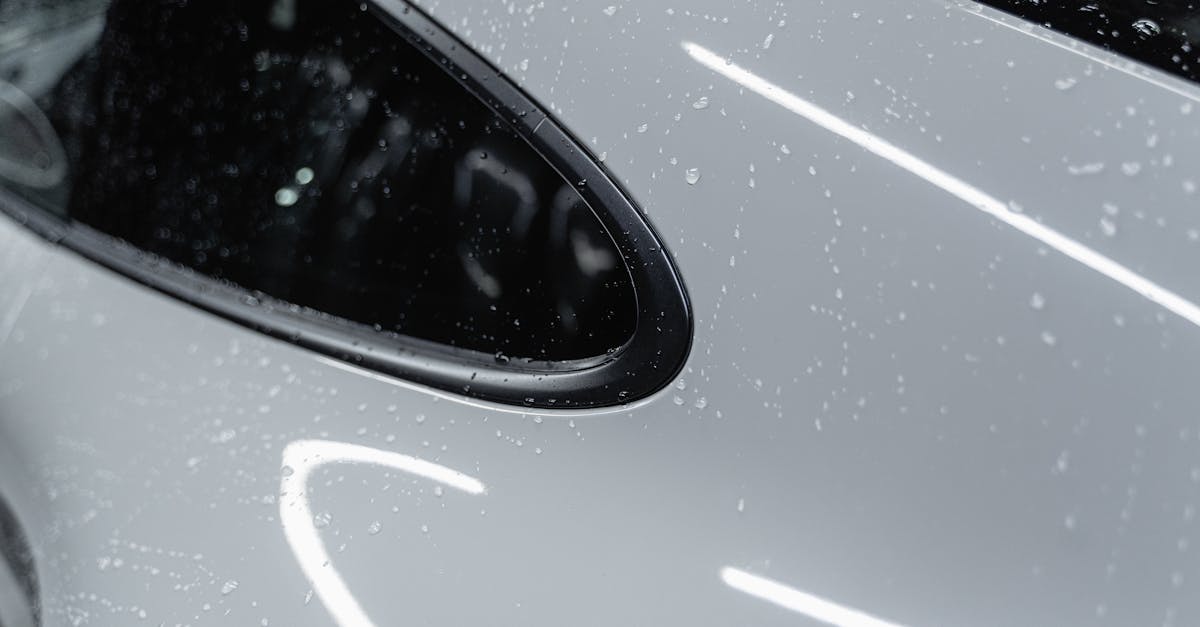
Common Mistakes to Avoid When Shampooing Car Carpets
Table Of Contents
Rushing the Drying Process
Taking time for proper drying is crucial when cleaning car carpets. Accelerating this step can lead to mould and mildew growth, which can cause unpleasant smells and damage the materials. Allowing carpets to dry completely provides better results, ensuring the fibres remain fresh and clean without retaining excess moisture.
Various methods can aid in the drying process without rushing. Using fans, opening windows, or parking in a sunny location can significantly enhance airflow. These strategies help reduce drying time while promoting a thorough and effective cleaning experience. Prioritising adequate drying ensures longevity and appearance of the car’s interior.
Why Proper Drying is Essential
Proper drying is crucial to maintain the integrity of car carpets and prevent issues such as mould and mildew growth. When carpets remain damp for extended periods, moisture can seep into the underlying padding and create a breeding ground for unwanted odours and bacteria. This not only affects the air quality within the vehicle but can also lead to long-term damage that may require professional intervention or costly replacements.
In addition, inadequate drying can result in unsightly water stains or discolouration. These marks can be challenging to remove and may detract from the overall appearance of the vehicle's interior. Taking the time to ensure carpets dry properly not only preserves their aesthetic appeal but also significantly extends their lifespan, offering better value in the long run.
Not Rinsing Thoroughly
Neglecting to rinse the carpets thoroughly can lead to a host of issues. Residue from shampoo or cleaner may remain in the fibres, making the carpets feel sticky or grimy over time. This residue not only attracts dirt but may also contribute to unpleasant odours, compromising the overall freshness of the car's interior.
Inadequate rinsing can cause long-term damage to the carpet material. The chemical components in cleaning products can be harsh and, if left behind, may degrade the fibres, leading to premature wear and a reduced lifespan for your carpets. Ensuring a complete rinse eliminates these risks, promoting a clean and well-maintained environment within your vehicle.
Avoiding Residue Buildup
Thorough rinsing during the cleaning process is vital to prevent any leftover cleaning agents from seeping into the carpet fibres. Residue buildup can attract dirt and grime, leading to a cycle of frequent cleaning that is both time-consuming and ineffective. It is essential to ensure that all soap and detergent are entirely washed away, as these substances can create a sticky texture that makes carpets appear dull and unclean.
Regularly inspecting the carpets after cleaning can help detect any signs of residue. If carpets feel tacky or look discoloured, it may indicate that the rinsing was insufficient. To avoid this issue, use clean water for at least one or two rinse cycles, ensuring that all cleaning agents are fully removed. This extra step can significantly enhance the longevity and appearance of your car's carpets.
Using Incorrect Tools
Using the wrong tools can lead to ineffective cleaning and damage to car carpets. For instance, a standard household vacuum may lack the suction power needed to remove deep-set dirt and debris. Selecting a dedicated carpet cleaner or an extractor designed specifically for automotive interiors is crucial for achieving the best results.
Additionally, using brushes that are too stiff can cause fraying or damage the fibres of the carpet. Opting for soft-bristle brushes ensures a gentle but effective clean. Investing in the right equipment not only makes the process easier but also extends the lifespan of your vehicle's interior.
Choosing the Right Equipment for the Job
Selecting appropriate tools can significantly impact the outcome of your carpet cleaning efforts. Using a vacuum cleaner designed for wet and dry applications ensures that moisture is effectively removed. A dedicated carpet extractor is also ideal, as it applies cleaning solution, scrubs the fabric, and extracts dirt and water in one process. These machines often come with specialised attachments to reach tight spaces and delicate areas.
Additionally, using brushes suited for carpet cleaning is essential. Stiff-bristled brushes might damage fibres, while soft brushes may not provide enough scrubbing power. It’s advisable to use a dual-bristle brush that combines both firmness for dirt removal and softness for protecting the carpet material. Investing in high-quality cleaning solutions will also complement your equipment choice, ensuring effective dirt and stain removal without harming the carpets.
FAQS
What are the common mistakes to avoid when shampooing car carpets?
Some common mistakes include rushing the drying process, not rinsing thoroughly, and using incorrect tools or equipment.
Why is proper drying of car carpets essential?
Proper drying is essential to prevent mildew and mould growth, which can lead to unpleasant odours and damage to the carpet.
How can I avoid residue buildup when shampooing my car carpets?
To avoid residue buildup, ensure that you rinse the carpets thoroughly after shampooing to remove any soap or cleaning solution.
What types of tools should I use when shampooing car carpets?
It's important to use the right tools, such as a vacuum with a carpet attachment and a quality carpet cleaner designed for automotive use, to achieve the best results.
Can I shampoo my car carpets without professional help?
Yes, you can shampoo your car carpets without professional help, but it's important to follow proper techniques and avoid common mistakes for the best outcome.
Related Links
The Importance of Regular Carpet Shampooing for Vehicle LongevityEssential Techniques for Effective Carpet Shampooing in Your Car
DIY Carpet Shampooing: Tips for the Budget-Conscious Car Owner
Benefits of Professional Carpet Shampooing for Your Vehicle